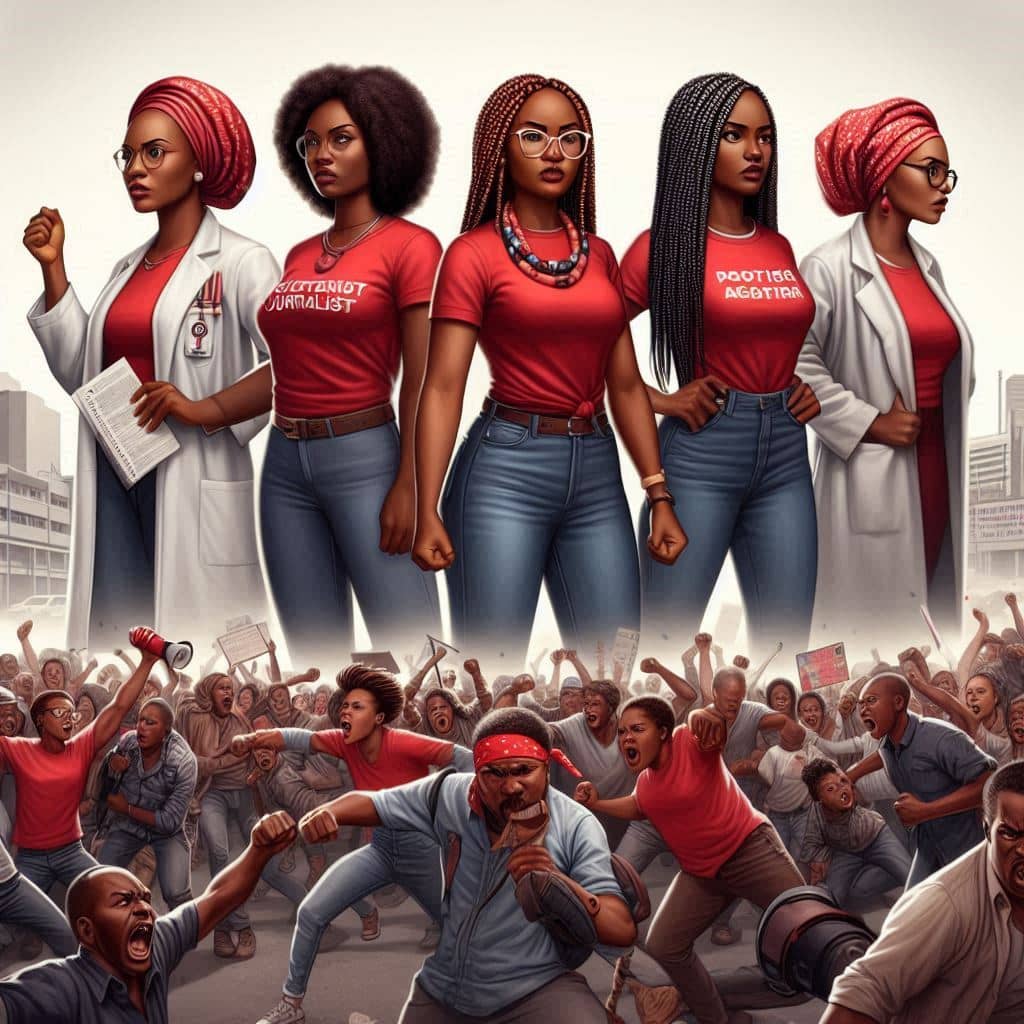
|
Getting your Trinity Audio player ready...
|
In the city of Migoria, where the sun dipped into the horizon and painted the sky with hues of crimson and gold, a sinister shadow loomed over the lives of women. Oppression, discrimination, and marginalization had become the unholy trinity that ruled their fate.
Kemi, a fiercely determined journalist, had dedicated her life to exposing the dark underbelly of Migoria’s misogynistic society. Her latest investigation had uncovered a web of corruption and sexual exploitation that threatened to destroy the very fabric of the city. She had discovered a secret society of powerful men, known only as “The Order,” who exploited and abused women with impunity.
But her editor, Mr. Nduka, a man consumed by his own biases and beholden to The Order, refused to publish her findings, labeling her a “hysterical female” and dismissing her work as “emotional nonsense.” He threatened to destroy her career and reputation if she persisted in pursuing the truth.
Dr. Adaeze, a brilliant scientist on the cusp of a groundbreaking discovery, faced a similar struggle. Her research was constantly belittled, and her ideas stolen by her male colleagues. One fateful night, as she walked home from her laboratory, a group of men accosted her, their catcalls and lewd remarks piercing the night air. When she stood up for herself, they sneered, “Feminist witch, you will die lonely, you are expired, whore” and lunged at her with violence in their eyes. Luckily, with the help of stray dogs, she was able to escape the assault.
The spark of resistance was ignited in her that night. Kemi and Adaeze joined forces with a diverse group of women: Zara, a charismatic activist who had survived The Order’s brutality; Doshima, a poet whose words were laced with fire and fury; and Suzan, a entrepreneur who had built her empire from scratch and had secrets of her own. Together, they formed a sisterhood movement that would shake the foundations of Migoria.
Through rallies, protests, and art, they challenged The Order’s stranglehold on the city. They fought for equal pay, reproductive rights, and an end to gender-based violence. They created safe spaces for women to share their stories, to heal, and to find solidarity. But The Order would not relinquish its power without a fight. They wanted to keep the women of Migoria at their mercy.
As the women found their voices, they were met with brutal resistance. They were beaten, arrested, and silenced. But they refused to be defeated. Kemi’s investigation was finally published, but she was forced into hiding to escape The Order’s wrath. Dr. Adaeze’s research was recognized, but she was ostracized by her colleagues. Zara’s activism inspired a new generation of young women, but she was hunted by The Order’s henchmen. Doshima’s poetry became a battle cry for the movement, but she was forced to write in secret. Suzan’s business empire became a symbol of women empowerment, but she was forced to make dark compromises to keep it afloat.
As the battle between the women and The Order raged on, the city of Migoria descended into chaos. The streets ran red with blood, the skies grew dark with smoke, and the once-vibrant city was reduced to ruins. But in the midst of destruction, the women found their strength. They found their voices, their power, and their solidarity. And in the end, it was The Order that was destroyed, its members brought to justice, and its dark secrets exposed to the world.
The women of Migoria had ignited a revolution, shattering the chains of oppression and unleashing a power that would forever change the city’s landscape. They had fought for their rights, their dignity, and their lives. And they had emerged victorious, their voices echoing through the ruins of Migoria, a testament to the power of sisterhood and the unbreakable spirit of women. Indeed, there is beauty in chaos.



